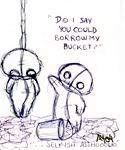Originally posted by Sagacious Lu
View Post
The closer you get to perfect, the more often you KO.
Ever KO someone with the first hit?
You just admited that it doesn't take years to learn how to generate enough power with a basic strike to hurt someone. Thank you. Why couldn't you have just said "You know what Lu, you're right" and skipped all the bullshit?
TJ's put a lot of effort into his replies.
Maybe he just isn't saying what you want to hear though eh?
There are no quick fixes in boxing, just a whole lot of hard work.
Why not expand on that on an appropriate thread?
@ Thai Bri I'm starting to understand why these guys piss you off.






Comment